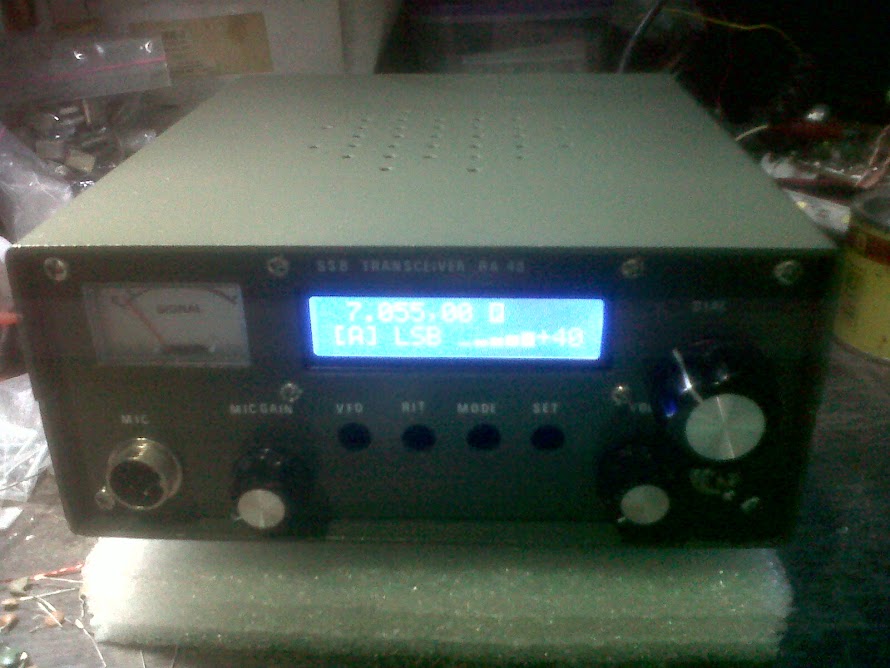
LM386 is very popular IC also in Japan. It is used in Radio receiver. The power of it (500mW) is enough for the personal use. But sometimes, the gain of it (40dB) is not enough. Especially the direct conversion receiver depend on all of its gain on the audio amplifier. And therefore, we must stay sometimes the pre-amplifier before LM386. I will show you the way to get the 74dB only with LM386. Please watch the circuit ! Rf is the feedback control resister. By chanbeing the Rf you can tune the gain of this circuit as follows.
| Rf (ohm) | gain |
| feedback
| dB |
| 3.3 | 74 |
| 10 | 70 |
| 33 | 54 |
| 105 | 44 |
| 820 | 34 |
Dear Sunamura-san, I like to read your web-site very much, and I repeated some of your constructions. I especially like your LM386 70 dB AF amplifier which I called =B3the Sunamura amplifier=B2 in our national Ham Magazine. Now, I have some news for you. The other day I found in our national ham magazine a new type of a rock stable VFO. They did not mention the first inventor, but I will try to find out who it was. It is a =8CColumbus= =B9 egg=B9 and it can substitute syntesizers. It uses a CERAMIC RESONATOR, and the frequency can be spread for about 100 kHz. I attach the electric diagram. The chief part s are the Ceramic Resonator CR and the variable capacitor C1. I used a standard CR for 3.579 kHz which is used as a clock in American digital devices. After a short warm-up, when you turn the capacitor C1 you can change the frequency for about 150 kHz - from 3440 to 3620 kHz. To cover the CW segnment of the 80 mteres band a variable capacitor of 140 pf is enough. And the frequency is rock stable. The capacitors C2 and C3 must have a capacity similar to the own capacity of the CR. In my case it was 600 pF. I also tried the ceramic filter for 10,7 MHz with three pins, but then I had to use 50 pF for C2 and C3, because that was the capacity of the filter. I used only two pins: the middle one and a side one - The frequency was between 10,9 and 11 MHz and the stability was very good. I also tried a 5,5 MHz filter, but it did not work well - it gave a frequency of 17 MHz with only 10 kHz of spread. I am sure that you will make use of this oscilator - with your tehcnical ingenuity. When I get some new CRs, I will make some more experiments. Meanwhile, I remain with best wishes, Bozidar Pasaric, 9A2HL, City of Rijeka, Croatia, Europe My E-mail: bpasaric@mac.com
Created by JF1OZL


